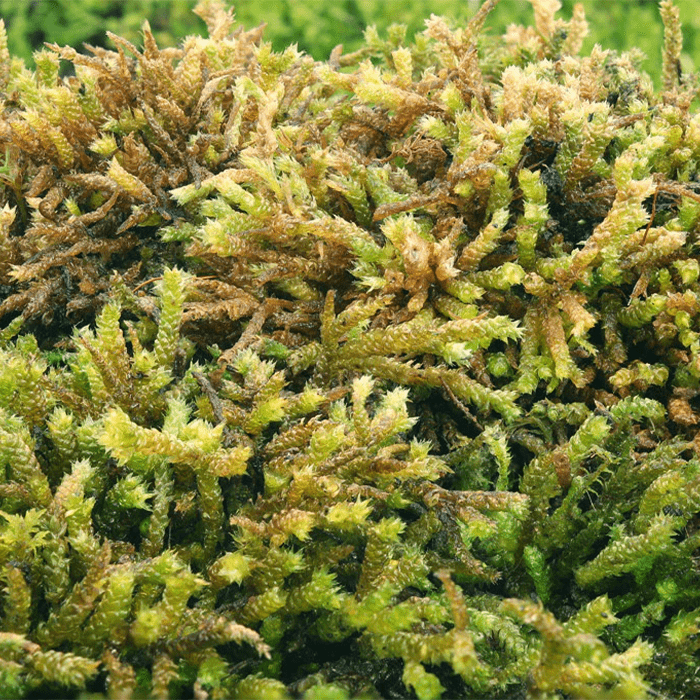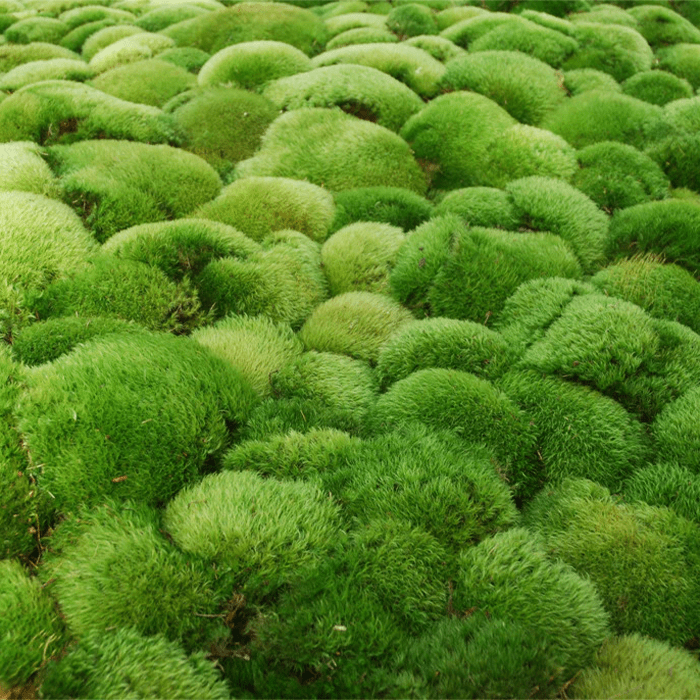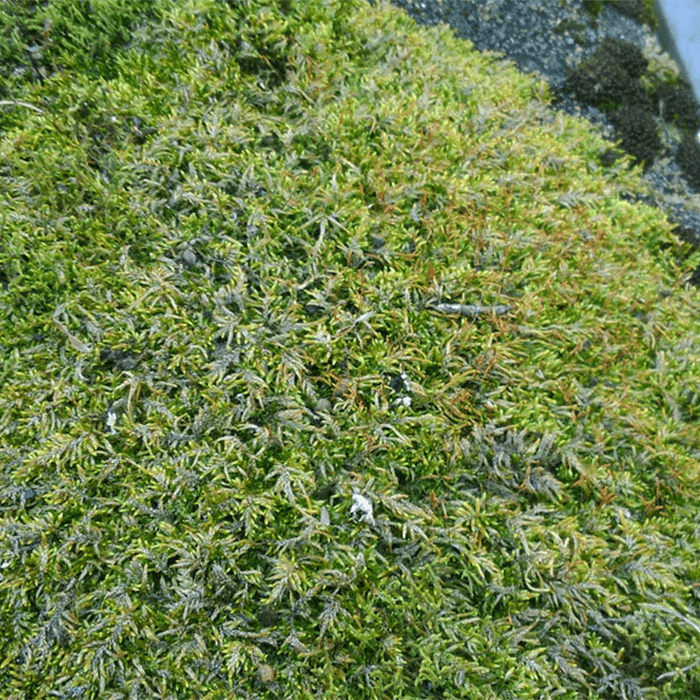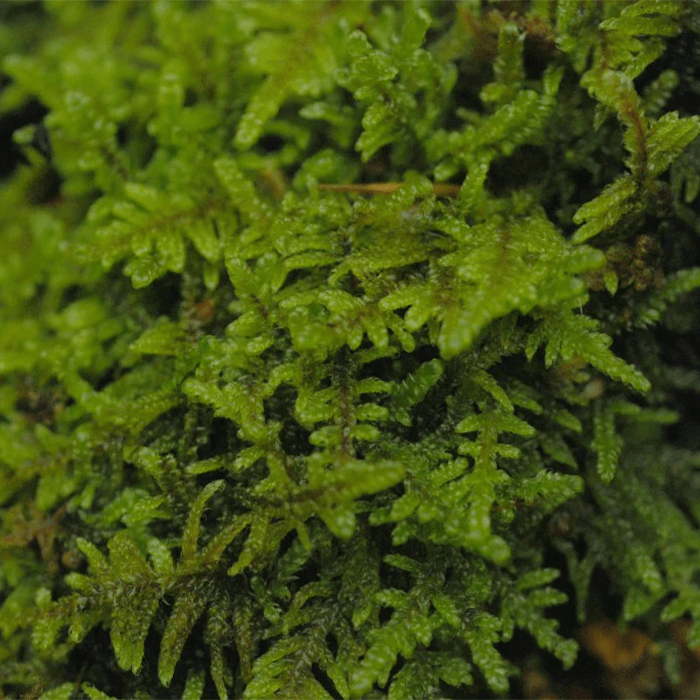Whether you have shade or sun, want a deep-green carpet or a fluffy mini forest, here's how to choose what types of moss to grow in your yard.
8 Types of Moss To Grow in Your Yard

Bryoandersonia Illecebra
AKA worm or spoon moss, this versatile, shiny species looks a bit like shag carpeting and its translucent leaves add to its green color intensity. In sunnier places it will take on golden overtones. It is sun and wind tolerant and especially good for high heat index areas, but also works well in the shade, patios, water features.” $30 for a 10-in. x 20-in. tray.

Ceratodon Purpureus
AKA sidewalk moss, this is found in the cracks of sidewalks all around the world, Ceratodon is a small mound species that offers a velvety green texture. As a bonus, it’s sun-tolerant. This moss is an excellent choice for rock gardens, walls and patios. $35 for a 10-in. x 20-in. tray.

Climacium Americanum
“My favorite one, it’s quite massive,” says Martin. This upright grower, AKA tree moss, is lush and versatile, with colonies resembling forests of little trees. It’s good for lawns, walls, patios and especially where water tends to pool. Its tall mounds are great for water filtration and storm-water runoff. New growth is deep green, while older colonies or those in too much sun will turn yellow-green-brownish. Try it in deep shade to partial sun. $35 for a 10-in. x 20-in. tray. Get to know about moss gardens.

Dicranum Scoparium
AKA mood, broom or windswept moss, Dicranum is sought-after for its deep-green color. It grows in mounds and does well on inferior acidic soils and rock substrates, but not in constant moisture. Under pine trees is a great place for it. Too much sunlight causes it to burn. It also doesn’t attach well, so use it for aesthetic rather than environmental reasons. A similar species, Ditrichum affine (wheat moss) produces an even deeper emerald color. $25 for a 10-in. x 20-in. tray. Find out what is a moss wall.

Entodon Seductrix
AKA toothpick or shiny sexy moss, Entodon, another shiny-green versatile moss, grows horizontally in flat colonies. It grows quickly and attaches itself to many surfaces, from acidic soil to concrete. It’s good for anywhere, but especially patios, moss lawns and green roofs. It thrives in sun, but tolerates shade. $35 for a 10-in. x 20-in. tray.

Hypnum Imponens
AKA sheet, brocade, fern, log or carpet moss, this species ranges in color from brilliant to dark or even yellow-green, and is a preferred shade moss species for lawns. They spread out horizontally, but also grow on vertical surfaces. They do well in shade and partial sun. “The more sun they’re exposed to, the more golden the plants become,” says Martin. $20 for a 10-in. x 20-in. tray.

Leucobryum Glaucum
AKA pincushion moss, these are versatile mound-forming mosses with deep- to light-green coloring, depending on their moisture content. They will grow in sun or shade, and on many soils from rich and acidic to barren and sandy. People also like these for terrariums because of their tendency to stay compact. $25 for a 10-in. x 20-in. tray.

Polytrichum Commune
AKA haircap moss, this is another tall moss. Polytrichum is good for erosion control and tolerates both shade and sun. “But this and any of the above species could be used in a Japanese-style garden as well,” says Martin. “They could also be used in a rock garden or wherever you want to plant them. They also go great with native plants.” $35 for a 10-in. x 20-in. tray.





















